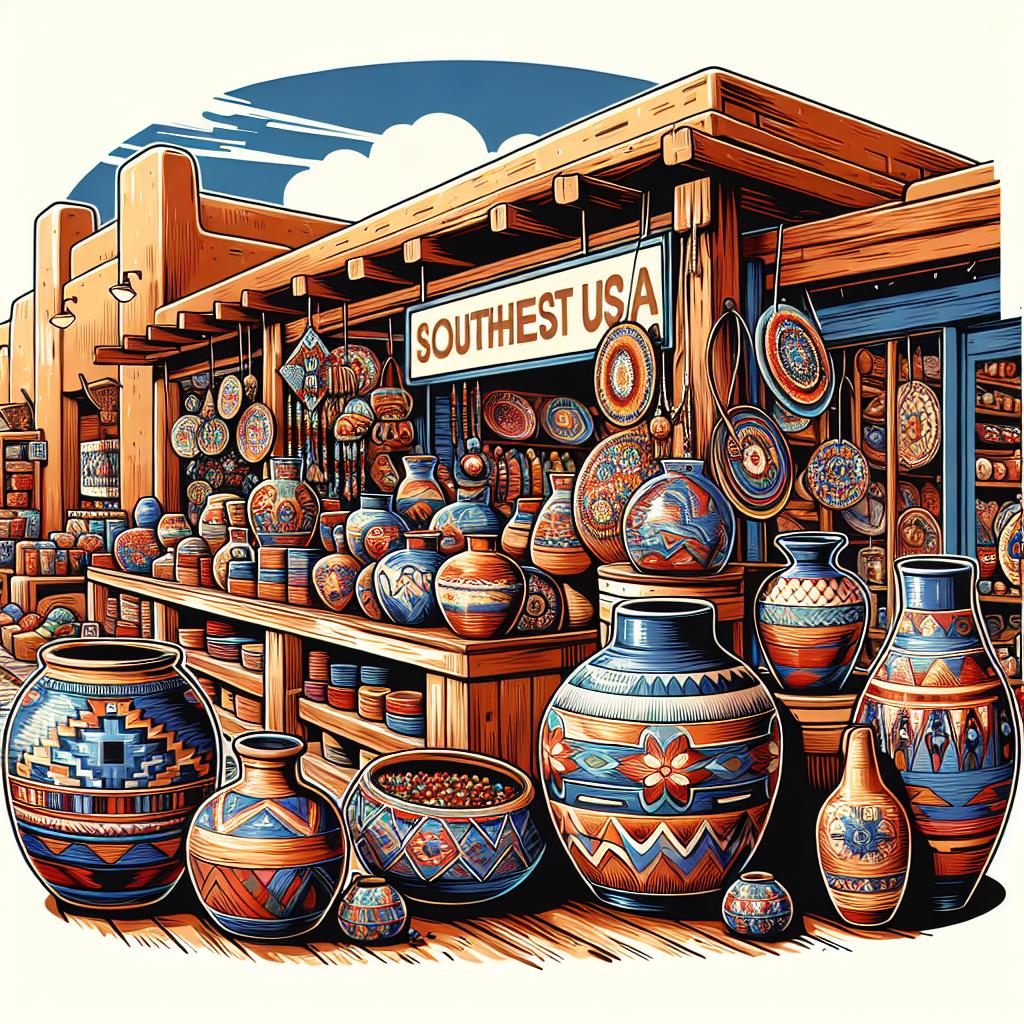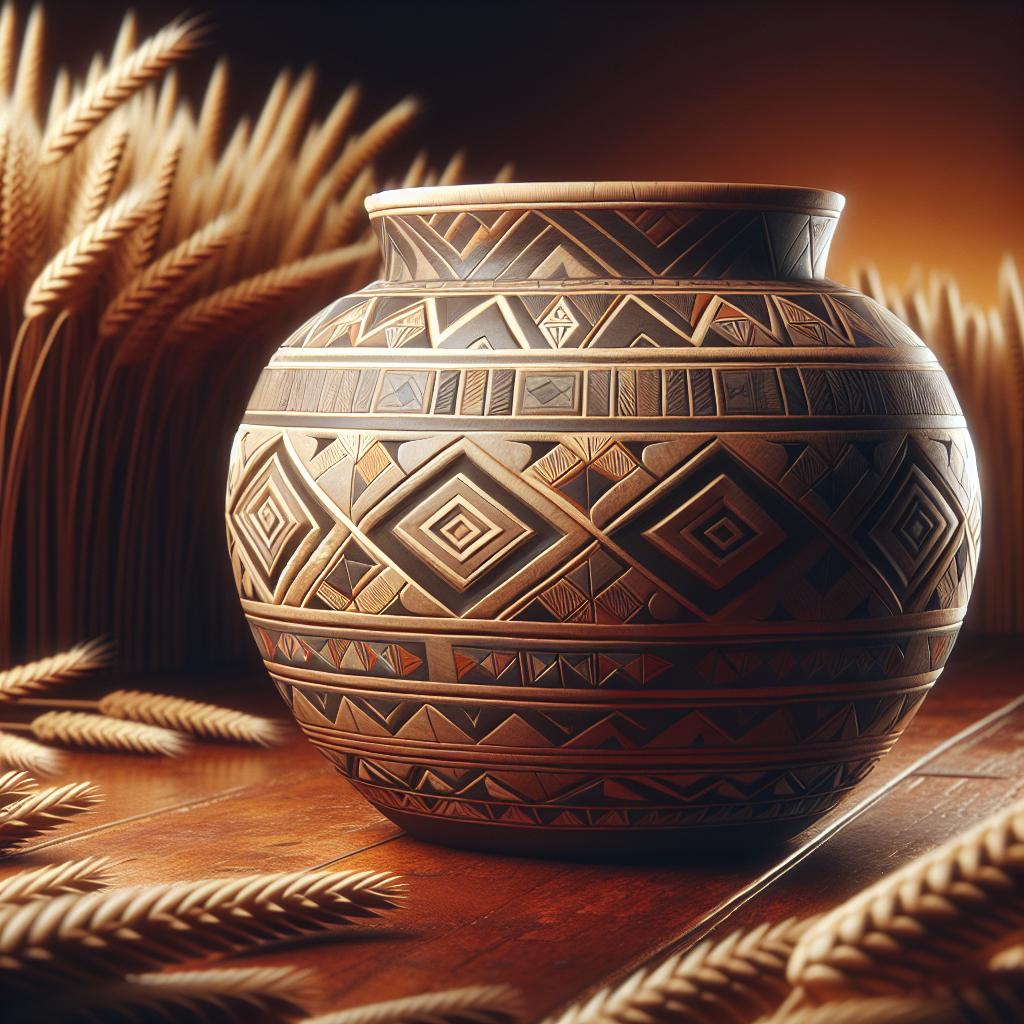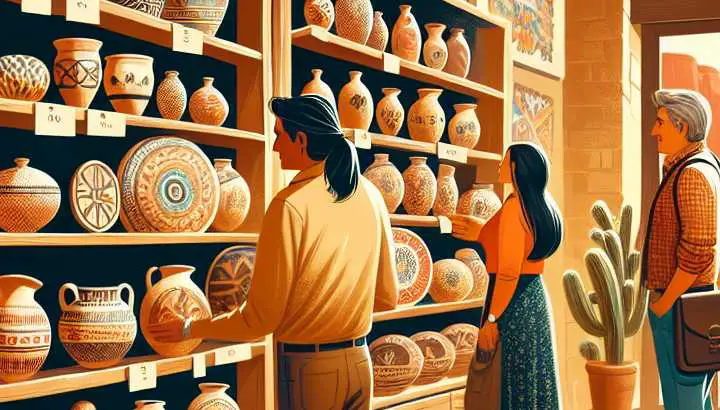Preserving the Art of Native American Pottery

Native American pottery techniques and materials
Once upon a time, in a land before video games, iPhones, and Netflix, Native American tribes were crafting and trading what people far into the future would consider as beautiful works of art. Archeologists ought to be heralded as magicians, because they can magically turn old clay into a fascinating history tale, or a lesson on the incredible Native American pottery techniques and materials.
Picture this — under the wide expanse of the blue sky, amidst the whispering winds and rustling grass, a Native American potter carefully pounds and molds clay, leading to the birth of a beautiful vessel. Not wanting to be too plain, they ask their friend, Fire, for some help. Fire likes to show off and it turns the soft clay into a hard, fascinating piece of art. Voila! The pow! in pottery!
Now, let’s take a time machine (remember, archeologist = magician) and head back to the birthplace of Native American pottery — the Southwest. I hope you’ve packed some sunscreen and a hat because it’s about to get real hot and archeology-y down here.
To begin with, pottery wasn’t just a fun pastime where you got your hands all goopy. It was underpinning the hunting, gathering, and trading lifestyles Native Americans authored. Bowls, pitchers, and jars weren’t just items from Pottery Barn for holding their lavender and vanilla candles. These were essential tools used for cooking, storage, and must I say, a rather brilliant way to get revenge on siblings, by hiding their most beloved objects in jars they could never open. Sneaky, right?
Believe it or not, the Native Americans were incredibly resourceful artists, more like the original zero waste champions. Clay was sourced from the nearby lands.
“With few exceptions the soldiers were boys who had never before left their native neighborhoods”
~ Unknown, Unknown
Old pottery shards, also known as temper, were crushed and mixed into the clay before the shaping process began, giving it more stability, and honestly, enough character to put a Victorian era novel to shame!
Their pottery techniques were zesty and innovative. Coiling was popular, where long thin rolls of clay were stacked layer upon layer, creating a piece that you’d swear was crafted to perfection by a 3D printer. And as if this weren’t impressive enough, the Pueblo tribes developed a corrugated technique too. Think of coiling but with more texture, more edges, like a clay version of your favorite ruffled chips, but please, resist the temptation to dip it into your salsa!
Wash away those images of Patrick Swayze and Demi Moore though because Native Americans didn’t use a pottery wheel. Instead, they coiled, pinched, and paddled the clay into shape — it was more of a yoga class and less of a ghost-inspired romantic workshop.
Painting and designs on the pottery were created with crushed minerals and plants. Imagine painting a bowl with your beloved catnip or creating a mug with your preferred blend of Earl Grey tea. Except, the Native American motifs were often a little more profound, often showcasing spiritual beliefs, tributes to nature gods, or clan symbols, what we’d call ~deep~ in the 21st century.
The fire pit was their kiln, all organic and ethereal, much like your favorite farm-to-table restaurant, only there were no bread baskets to look forward to. The type of fuel used controlled the atmosphere in the kiln, determining the pottery’s color. These pottery masters even knew how to manipulate fire to create a blackened effect, a technique known as black-on-black, making that old pottery even hotter!
So, next time you sip your skinny latte from an Italian espresso cup or cherish the prized china in your glass cupboard, remembering these past pottery champs, the Native Americans, might just spark a newfound appreciation for every cup, plate, and bowl around you.
The pottery wheel isn’t just a wheel, but a journey through time narrating tales of art, culture, and the indomitable spirit of human ingenuity.
And who knows, maybe this story might just inspire you to knead some clay yourself. Let’s all keep the pot boiling! Happy pottering!
Learn More Here: Native American Pottery Techniques And Materials

Cultural significance of Native American pottery art
Title: An Epic Clayfield Adventure: Interpreting the Cultural Significance of Native American Pottery Art
Hello Art Enthusiasts, Pottery Connoisseurs, Cultural Ambassadors, and, well, everyone feeling the pinch of boredom – we’re about to go on a slightly messy, occasionally lumpy, but intensely captivating voyage into the spirited world of Native American Pottery art. Strap on your enthusiasm, adjust those intellectual shades, and let’s paint a picture with kiln-fired clay.
Native American pottery is more than just mesmeric pieces of earth-tuned art composed of finely manipulated dirt. It’s a radiant expression of culture, a veritable hive of historical significance, and a testament to creativity. They’re like the party animals of the ceramic world, carrying bold stories, intricate designs, and millennia of traditions on their robust shoulders.
Every vessel, every pot, every clay bowl serves as a tangible link to a past marked by the powerful forces of survival, adaptation, and ingenuity. These vessels are time capsules. They’re like Tupperware, but instead of leftovers from last night’s dinner, they’re crammed with centuries of incredibly rich history and squiggly etchings.
Early Native American tribes, being the original eco-warriors, matey, utilized everything they had at their disposal, including the very earth itself. The tribes would dance with clay, teasing and kneading it into shapely symphonies that would later serve as cooking apparatuses, storage containers, and tragically hip tea cups.
Now, pump up the humor wattage as we delve deeper into the pottery patterns. My friends, no pot is just a pot in the Native American art realm. To the untrained eye, the patterns could be mistaken as a primitive doodle or an accidental slip of the hand after a couple of fermented corn drinks. But in fact, they are an intricate language of symbols.
“Murphy, Thos., 2d, |Hartford, | Dec. 4, ’62,|Deserted Dec. 22, 1862”
~ Charles K. Cadwell, The Old Sixth Regiment, Its War Record, 1861-5
Your cooking pot could literally be telling you an epic tale of survivors, gods and supernatural beings. Who knew your cookware could be quite that dramatic?
In most tribes, it was the women who excelled as potters, becoming the Michelangelos of Mire. They worked the clay into much more than utilitarian items. These shapers of dirt rendered bold expressions of their lived experiences, dreams and spirtual journeys. Their pottery was not simply decorative; it was didactic, representing the harmonious balance of the natural and spiritual world.
A bowl depicting a Kokopelli, a Native American symbol of fertility, means you’re not just using it to serve your famous three-bean chili at the tribe’s pot luck. You’re also appreciating and acknowledging the dances of life and creation. A pot etched with the figure of a bear offers courage and physical strength. And to think, we just used them to hold our collection of colorful pebbles!
Move over, porcelain china, Native American pottery is the original cool kid on the ceramics block. Vibrant with symbolism, storytelling and culture, these living art forms shape a bridge between past, present, and future, simultaneously reflecting the world they were created in and shaping the culture moving forward.
So, next time you come across a piece of Native American pottery, you’re not just looking at a hippy relic or rustic décor. You’re experiencing years of history, mythology, and life lessons, all curated and baked into fabulous ceramic form!
Has there ever been a more humble canvas than clay? We think not. Now go forth, potential pottery aficionados, embracing your newfound knowledge, interpret those clay stories and patterns like prose and remember, it’s not just a pot!
Read More Here: Cultural Significance Of Native American Pottery Art
